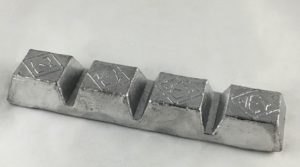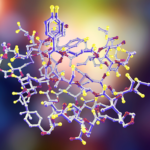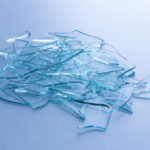Interesting facts about lead
 Such a metal as lead is very widely used in various industries. True, still not everyone knows that it can be dangerous for the human body, and that lead poisoning is very dangerous. But in the modern world, direct contact of a person with lead products is minimized, therefore, one should not be afraid of its harmful effects in general.
Such a metal as lead is very widely used in various industries. True, still not everyone knows that it can be dangerous for the human body, and that lead poisoning is very dangerous. But in the modern world, direct contact of a person with lead products is minimized, therefore, one should not be afraid of its harmful effects in general.
It is not known for certain when lead was first used by primitive people. The oldest lead archaeological finds are beads, which are about 8500 years old.
The ancient Egyptians knew about lead 3-4 thousand years ago. They sometimes made figurines of this metal.
Lead melts at a temperature already in 327.5 degrees. On the surface of the planet Venus, where the temperature exceeds 420-450 degrees, it is in a liquid state.
The ancient Romans made water pipes from lead pipes, not knowing that this metal was toxic.
In the Bronze Age, lead sugar was often added to wine to improve its taste.
Medieval alchemists associated lead with the planet Saturn.
In the human body, lead tends to accumulate in bone tissue, displacing and replacing calcium, which leads to serious diseases.
For children, lead is even more dangerous than for adults, since lead poisoning causes developmental delays.
It is quite possible to cut a lead ingot in half with a hardened sharp knife.
Under the influence of oxygen, lead, like aluminum, oxidizes very quickly, so it usually looks dirty gray on the outside, and glitters like silver on a break or cut.
Until the 70s of the 20th century, lead additives were added to gasoline to increase the octane number. They were later banned due to the enormous damage done to the environment.
American scientists have conducted a study and found that in regions with a minimum level of lead infection, crimes occur about 4 times less often than where there is a lot of lead in the environment. This is associated with the negative impact of this metal on the human brain and the body as a whole.
In the modern world, lead pollution poses a serious threat. For example, in Greenland over the last hundred years the level of lead in soil has increased 5 times.
Most of all the lead mined on Earth goes to the manufacture of batteries.
No gases dissolve in this metal, even if it is melted to a liquid state.
Sulfuric acid with a strength of even 80% is not capable of corroding lead, therefore this metal is also in demand in the chemical industry.
Of all the materials, it is lead that provides high protection against radiation.
The roof of the famous Paris Bastille was covered with lead. After the French Revolution, snuff boxes were made of it, on which they often depicted a guillotine.
Immediately after the invention of firearms, people began to make bullets for him from lead.
On average, in soil, water and air in a large city, lead content is 25-50 times higher than in rural areas free from heavy industry.



























